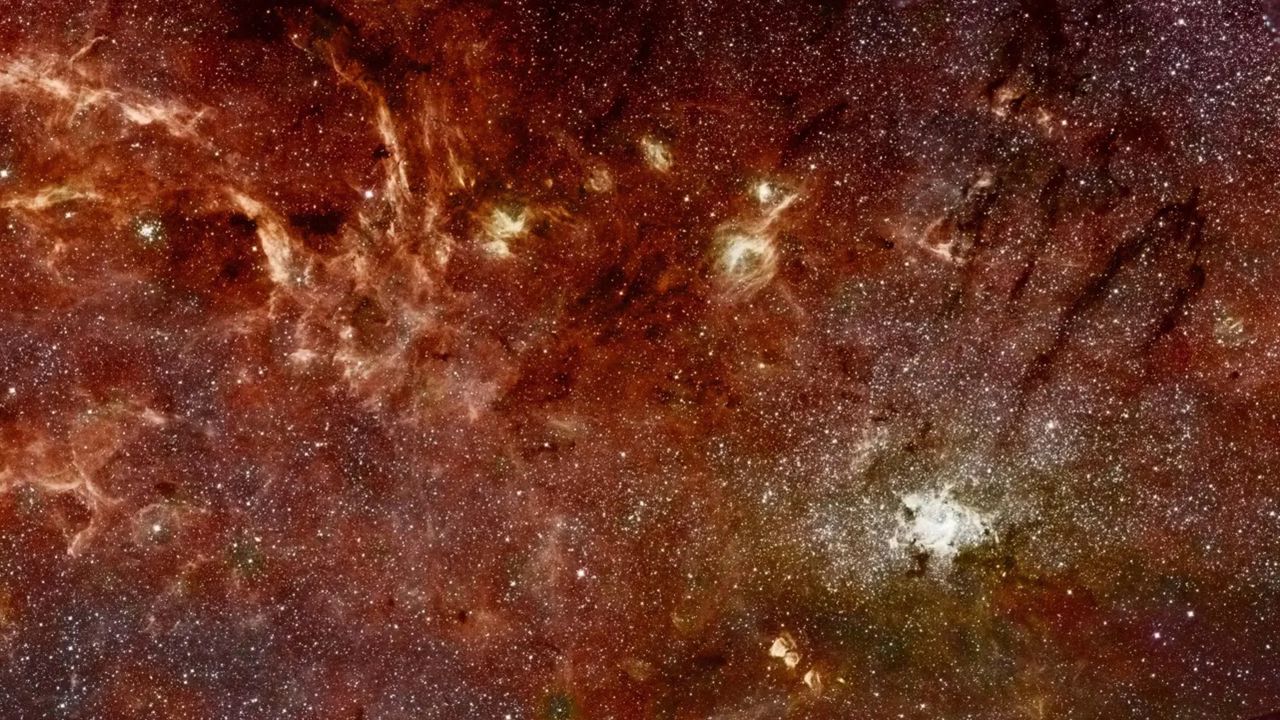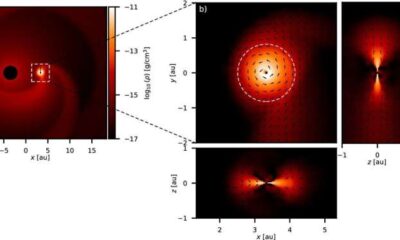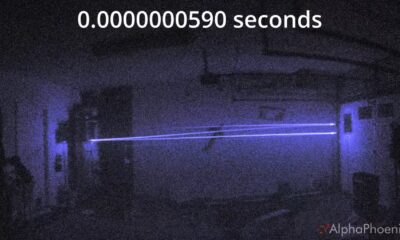Science
New Simulations Hint Dark Matter’s Role in Milky Way’s Glow

Researchers at the Leibniz Institute for Astrophysics Potsdam have made significant strides in understanding dark matter, potentially linking it to a faint glow observed at the center of the Milky Way. This development, highlighted in a study published on October 16, 2023, suggests that the elusive substance, which constitutes approximately 27% of the universe’s matter, may have a distinct signature detectable through gamma rays.
Dark matter has long posed a challenge in astrophysics due to its invisible nature. It does not absorb or emit light, making it undetectable by conventional telescopes. Despite extensive research and numerous experiments, including underground particle detectors and space observatories, scientists have yet to capture direct evidence of this mysterious material.
New simulations led by Moorits Muru indicate that dark matter in the Milky Way might not conform to previous assumptions of a spherical shape. Instead, it appears to take on a flattened, egg-like form. This finding aligns closely with the pattern of gamma rays detected by NASA’s Fermi Gamma-ray Space Telescope, which first identified a broad, hazy glow of high-energy light near the galactic core in 2008.
The initial observation from Fermi revealed a signal far brighter than existing models could account for. Scientists debated whether this gamma-ray emission resulted from collisions of dark matter particles known as WIMPs, or if it stemmed from millisecond pulsars—rapidly spinning neutron stars emitting radiation. The pulsar hypothesis gained traction due to the flattening of the gamma-ray glow, which mirrored the star-filled central region of the Milky Way. If dark matter were the source, a different, rounder emission pattern would be expected.
Muru and his team used advanced supercomputers to recreate the Milky Way’s formation, simulating billions of years of cosmic events, including collisions with smaller galaxies. This work unveiled “fingerprints” in the distribution of dark matter throughout the galactic core, suggesting a complex history that results in the observed flattened shape.
“We’re showing that dark matter also has this flattened shape,” Muru stated. “So, it does match the [gamma ray] excess much better than expected before.” While this finding bolsters the dark matter theory, it does not entirely dismiss the pulsar hypothesis, as both possibilities remain “essentially indistinguishable” at this stage.
If the gamma-ray excess is indeed a result of dark matter interactions, it could offer the first indirect evidence for the existence of WIMPs. Future observations from the Cherenkov Telescope Array Observatory (CTAO), set to begin operations in the late 2020s, promise to enhance our understanding further. The CTAO will observe gamma rays with greater resolution compared to Fermi, allowing scientists to differentiate between the higher-energy emissions of pulsars and the lower-energy signatures from dark matter annihilations.
Muru expressed optimism regarding the potential for further discoveries. “That’s where we hope to measure the signal. We’re really looking forward to these observations.” As the quest to identify dark matter continues, researchers remain committed to unraveling one of modern physics’ most enduring mysteries.
In summary, the recent findings offer a tantalizing glimpse into the nature of dark matter and its possible connection to the Milky Way’s enigmatic glow, with implications that could transform our understanding of cosmic phenomena.
-

 Science2 months ago
Science2 months agoOhio State Study Uncovers Brain Connectivity and Function Links
-

 Politics2 months ago
Politics2 months agoHamas Chief Stresses Disarmament Tied to Occupation’s End
-

 Science1 month ago
Science1 month agoUniversity of Hawaiʻi Joins $25.6M AI Project for Disaster Monitoring
-

 Science4 weeks ago
Science4 weeks agoALMA Discovers Companion Orbiting Giant Star π 1 Gruis
-

 Entertainment2 months ago
Entertainment2 months agoMegan Thee Stallion Exposes Alleged Online Attack by Bots
-

 Science2 months ago
Science2 months agoResearchers Challenge 200-Year-Old Physics Principle with Atomic Engines
-

 Entertainment2 months ago
Entertainment2 months agoPaloma Elsesser Shines at LA Event with Iconic Slicked-Back Bun
-

 World1 month ago
World1 month agoFDA Unveils Plan to Cut Drug Prices and Boost Biosimilars
-

 Business2 months ago
Business2 months agoMotley Fool Wealth Management Reduces Medtronic Holdings by 14.7%
-

 Science2 months ago
Science2 months agoInnovator Captures Light at 2 Billion Frames Per Second
-

 Top Stories2 months ago
Top Stories2 months agoFederal Agents Detain Driver in Addison; Protests Erupt Immediately
-

 Entertainment1 month ago
Entertainment1 month agoBeloved Artist and Community Leader Gloria Rosencrants Passes Away









